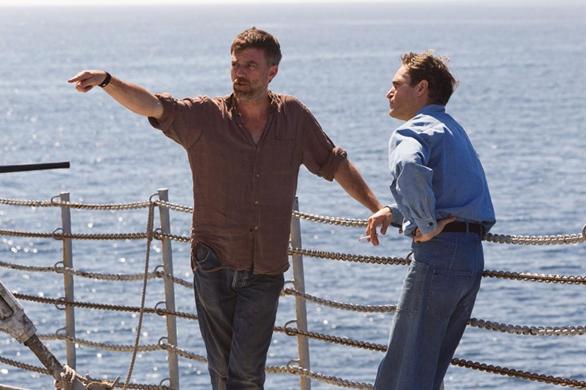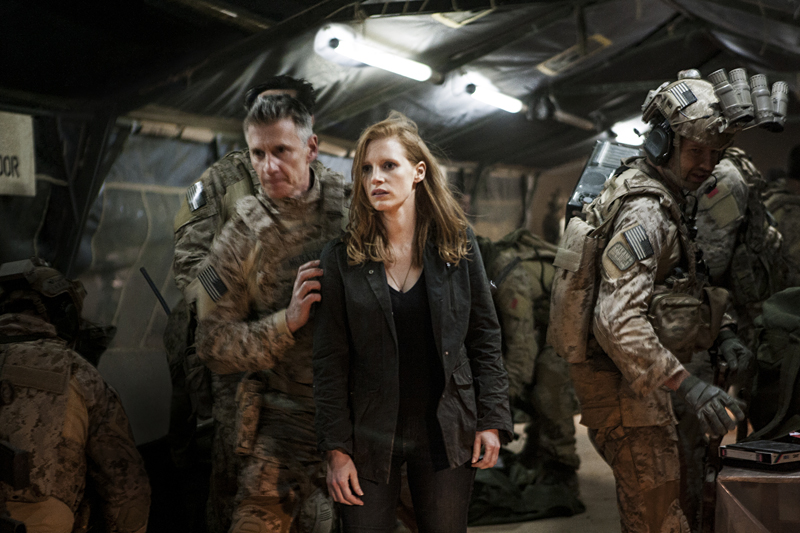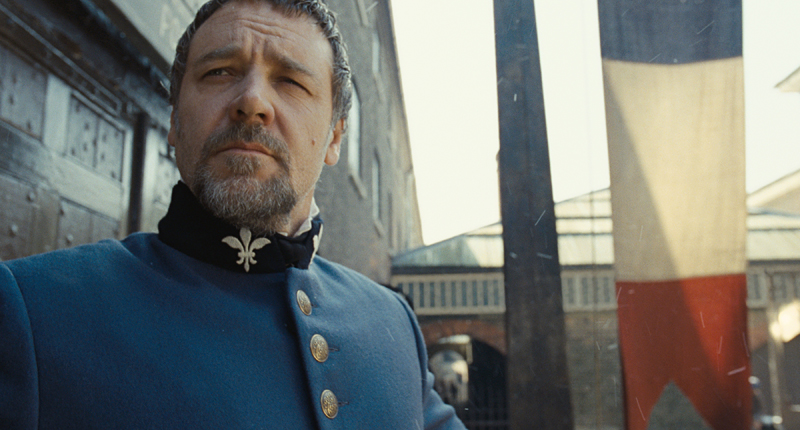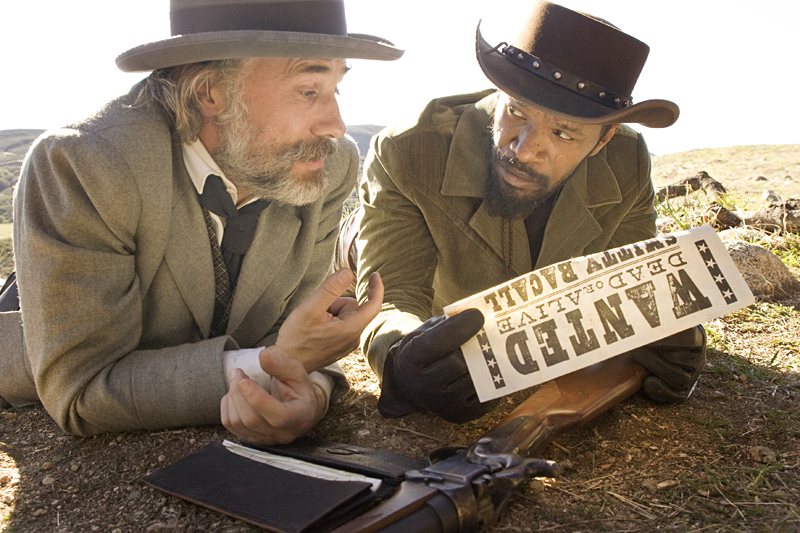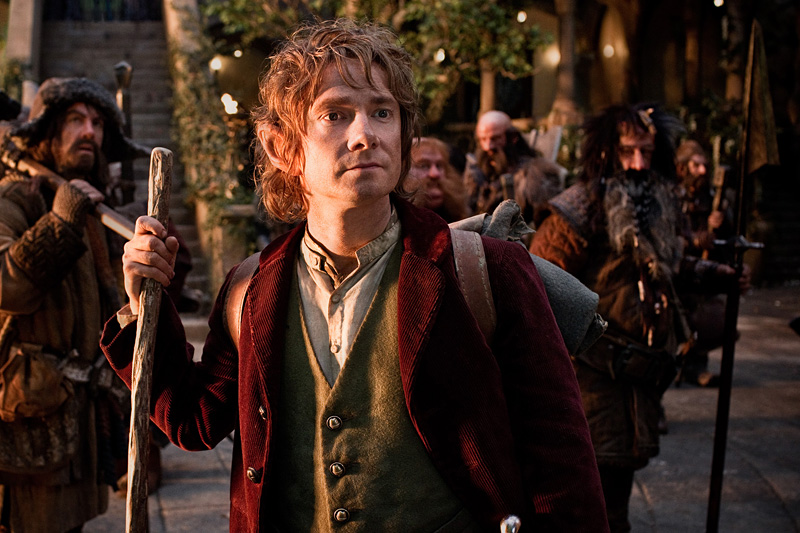“I’ve made six movies, and I feel like I’m only just finally figuring out how this business fucking works,” Paul Thomas Anderson says on an unseasonably mild August afternoon in the Astoria section of Queens, where later tonight he will preview his latest film for an invited audience at the Museum of the Moving Image. The movie is The Master, Anderson’s first in the five years since the Oscar-winning There Will Be Blood, and one of the year’s most feverishly anticipated cinematic events—a must-see status attributable to Anderson’s vaunted standing among serious film buffs, to the generally secretive nature of the production (at a time when we know far too much about most movies before we see them), and, mostly, to the film’s subject matter: the early days of a self-help religion that bears more than a passing resemblance to L. Ron Hubbard’s Church of Scientology.
For Anderson, the Queens screening is the latest stop in an impromptu coast-to-coast tour that has included surprise public screenings of The Master in Los Angeles, Chicago, Austin, and San Francisco, weeks before the official world premiere at the Venice Film Festival. Those sneaks have sparked torrents of favorable Internet and social-media buzz, along with the all-too-predictable musings of the blogosphere’s Oscar-season soothsayers that Anderson’s film is “difficult” and “challenging”—in other words, not your typically pandering, sugarcoated, year-end Hollywood pap. Perhaps most remarkably, all of those screenings have taken place in cinemas equipped to project Anderson’s film in his preferred format: the large-frame 70mm film process whose exceptionally clear, vivid images were once the gold standard for Hollywood’s big musicals and historical epics, and which hasn’t been in regular use since the VHS era (and hadn’t been used at all since Kenneth Branagh’s Hamlet in 1996).
This is partly what Anderson means, I suspect, when he says he has finally figured things out. In short, he has gone rogue. As we stroll through the streets around the museum, he recalls the battles he once fought with New Line Cinema (which produced and distributed Boogie Nights and Magnolia) over everything from poster to trailer design and how, on The Master, he has simply done everything himself, creating his own teasers for the movie and uploading them immediately to the Internet—and yes, even screening the film publicly without the approval of his new distributor, Harvey Weinstein.
“We had this idea to do a bit of a road show, because we just didn’t know, theatrically, how often we’d be able to play in 70mm,” he says, settling into an outdoor table at one of the neighborhood’s many Greek bistros. Anderson stumbled upon the format—the ancestor of IMAX—while doing camera tests with his cinematographer, Mihai Malaimare Jr., and felt it was the right fit for the film. Now, together with his post-production supervisor, Erica Frauman, he has been compiling lists of 70mm cinemas and, when necessary, dispatching technicians to make sure the projectors are in full working order. Of particular interest, Anderson says, was showing the film at least a few times in grand, single-screen movie palaces, including Chicago’s Music Box and San Francisco’s Castro, where, due to the brass tacks economics of first-run film distribution (which favors multiplexes and nationwide chains), The Master would be unlikely to play during its actual commercial run.
“I have to say, it’s been great to play there, but it’s exciting how many commercial theaters are going to play it in 70,” Anderson adds. And if that all seems like a lot of fuss for a movie that mostly takes place in small, nondescript houses, apartments, and offices, The Master nevertheless conjures an epic feel. It’s a movie whose ideas are as big as any David Lean landscape.
Anderson yawns, stretches, and runs his hands through his already unkempt hair, which, coupled with his outfit of an open-collared checkered shirt, board shorts, and desert boots, gives him the appearance of a wayward, landlocked surfer. “It’s a hair-of-the-dog day for us,” he says in reference to a late night on the town in the company of his assistant director and executive producer, Adam Sommer, whom he hadn’t seen in several months. Anderson officiated at Sommer’s wedding, he tells me. “I’m an ordained minister for Rose Ministries of Las Vegas, Nevada. My sister was getting married and wanted me to preside, so she gave it to me for Christmas. She did it all online.” No wonder, I say, he finds himself drawn to religion as a subject.
Seen one way, The Master is Anderson’s second film in a row about a self-appointed prophet starting a congregation, after There Will Be Blood and its hellfire-and-brimstone preacher Eli Sunday (Paul Dano), who agrees to let the oilman Daniel Plainview (Daniel Day-Lewis) drill on his family’s land in exchange for the money he needs to build his Church of the Third Revelation. In The Master, the savior and the businessman are one and the same: the charismatic Hubbard surrogate Lancaster Dodd (played with great Wellsian flourish by Philip Seymour Hoffman), who describes himself in one early scene as “a writer, a doctor, a nuclear physicist, a theoretical philosopher” and, above all, “a man, a hopelessly inquisitive man.”
Known by his followers as Master, Dodd is the author of a book called The Cause (modeled on Hubbard’s bestselling Dianetics), which seeks to free readers from “past trauma,” revert the mind “to its inherent state of perfect,” and otherwise untangle the knots in the human psyche. This is accomplished through a series of therapies also capable—in the words of their humble creator—of ending war, poverty, and cancer. And when The Master begins, in a newly post–World War II America, Dodd and his teachings have already begun to amass a sizable following.
Into this world comes a drifter, a discharged Navy man named Freddie Quell (Joaquin Phoenix), who, it’s clear from the start, isn’t just another sheep to the flock. A rolling stone—or perhaps, more accurately, a manic pinball—trying to find his place in the world, Freddie first encounters Dodd when he stows away on his yacht in the San Francisco Bay. Before long, the sailor’s prodigious moonshining and photography skills are put to use by the guru, who welcomes the challenge of taming the feral creature before his eyes.
“I think Master probably gets a real—what’s the word I’m looking for—that kind of hunger that must happen inside him when he gets a whiff of low self-esteem off someone,” says Anderson, who can’t remember how he first started to work on The Master, except that “I’ve always thought Hubbard was a great character, so interesting and larger than life, and kind of impossible to ignore.” (At no point before, during, or after the making of the film, Anderson stresses, did the famously litigious church make any direct or indirect inquiries about the project or otherwise try to inhibit its progress.)
From there, Anderson likens his research process to a digressive Internet search that starts one place and ends up somewhere wholly unrelated, “like when you get on YouTube looking for a sports clip and now, three hours later, you’re watching some old Tonight Show with Johnny Carson.” One of his Web finds was The Aberree, a Scientology-themed newsletter published from 1954 to 1965 by a Phoenix couple, Alphia and Agnes Hart, who were among Hubbard’s early adopters. (“The most certain thing about Scientology is that no one can be certain what this ‘Science of Certainty’ will come up with next,” reads the opening line of the first issue, leading off a discussion of the nascent church’s efforts to legalize itself as a religion.)
“It really was the best possible way to time travel, reading these newsletters,” he says, “and to kind of get a sense of not just Hubbard, but the people who were really interested in the beginnings of this movement, because they were very, very hungry to treat themselves and get better, and they were open to anything. They were so incredibly optimistic.”
So The Master is ultimately “about” Scientology in much the same way that Boogie Nights was about the San Fernando Valley adult-film industry of the 1970s or There Will Be Blood was about the California oil boom of the early 20th century. That is, it functions as a secondary concern, more setting than actual subject, more subtext than text. It is a way for Anderson to bring together an assortment of his typically idiosyncratic, iconoclastic characters and a conduit to larger themes of power and paranoia, domination and submission, free will and predestination. Indeed, no less than Anderson’s previous film does The Master feel like a bold, somewhat cryptic meditation on underground forces that have shaped modern America. “Is it possible to live without some kind of master in our lives?” the movie asks, leaving it to us to decide.
For his part, Anderson is loath to see the movie as a variation on a pet theme. “Is it getting tired?” he asks when I say that Dodd and Freddie recall the surrogate father-son relationships in many of his films, beginning with the aging gambler Sydney (Philip Baker Hall) and his naive protégé (John C. Reilly) in Anderson’s 1996 debut feature, Hard Eight. He prefers to think of his Master characters as unrequited lovers, a subtle, homoerotic tension that is triangulated in the film by the presence of Dodd’s loyal, steely wife (Amy Adams). “But maybe that’s just my way of dressing it up and thinking I was doing something different this time,” he says. In any case, he seems happy that people—including us—are finally talking about something other than Scientology. “I’ve kind of loved these screenings we’ve had, because no one’s talking about Scientology anymore once they see the film. They’re just talking about how fucking good Joaquin Phoenix is.”
And they’re right. In his “comeback” role, four years after purportedly retiring from acting to pursue a career as a rapper (only to finally let the world in on his elaborate prank), Phoenix is nothing short of astonishing. It’s a fiercely physical, animalistic performance that calls to mind the young Jack Nicholson—the one seen in Five Easy Pieces and One Flew Over the Cuckoo’s Nest—in its diabolical unpredictability, its paroxysms of emasculated rage.
When we first see Freddie, he’s living it up as a gregarious Navy prankster, making hooch out of torpedo fuel and waking up hungover on top of the ship’s mast (an episode Anderson borrowed from the life of his late Magnolia star, Jason Robards). But by the time Freddie ends up as a department-store-portrait photographer—one of several short-lived, postwar jobs—he appears radically transformed, with the tense, rigid posture of an arthritic old man or of a tightly compressed powder keg primed to blow (and when he does, it’s terrifying). At the same time, Phoenix uses his distant, soulful eyes to imbue the character with the sense of a wounded, fragile being trying desperately to find his sea legs on solid ground, struggling to find a suitable explanation for the turning of the world.
“I knew he’d be good, but I can’t say that I expected what we got,” Anderson says between sips of white wine. “I love watching him, and I get the impression people don’t understand that there’s actually a truly inventive and disciplined actor there, which I guess is great. I would hate to say too much and uncover the mystery.” Anderson had wanted to work with Phoenix for years, ever since he offered the actor a role in Boogie Nights, which he turned down (as he did a later offer to appear in There Will Be Blood). Then, when he began casting The Master, Phoenix had temporarily gone off the acting reservation. For a while, Jeremy Renner was attached to the role, until a series of lengthy production delays forced him to drop out and left Anderson once again searching for a leading man. By that point, Phoenix was back in the movie business and ready to get his game face on.
The Master was supposed to be the movie that broke Anderson’s habit of taking breaks between projects long enough to rival one of his filmmaking idols: Stanley Kubrick. Although, as I point out, Kubrick managed to direct eight features in his first 16 years as a director, whereas he has managed only six. To which a visibly unamused Anderson responds: “Oh, fuck off. It’s been no fault of my own!”
But The Master was to have been different. Written quickly by Anderson in the wake of There Will Be Blood, the project was initially set up at a major studio—Universal—but stalled almost immediately when Hoffman (for whom Anderson had written the title role) announced that he would be busy with stage commitments for most of the next year. When Hoffman freed up, the studio had cooled on the idea, which landed the movie looking for a new home, “and it was dry as a bone,” Anderson recalls. “There were no real takers.” You’d think, I say, that the studios would have been clamoring for the next project from the director of There Will Be Blood, which became not only the biggest critical success of Anderson’s lauded career, but also his biggest box office hit (grossing $40 million domestically and another $35 million internationally on a $25 million budget). “I thought that, too!” he says. “They had me convinced that the world was mine for a few days, and then they said, ‘Not so fast.’”
It was a moment at which Hollywood’s decade-long infatuation with the independent-film world, spurred on by the breakout Sundance successes of the late 1980s and early ’90s, was coming to an abrupt end. Anderson’s erstwhile hitching post, New Line, was in the process of being swallowed up by Warner Bros. (at the same moment Warner was shuttering its nascent Warner Independent Pictures division). The Weinstein brothers had left the Miramax building. Next, Paramount announced it was curtains for their in-house “specialty” label Paramount Vantage (which distributed There Will Be Blood). “It did seem like there was a cashing out, pushing the chips across the table and saying, ‘That’s enough of that horse shit,’” Anderson says. Then the filmmaker himself started to have doubts about the Master script and went back to do several months of rewrites.
The movie might never have gotten off the ground at all were it not for the appearance of one Megan Ellison, the daughter of multibillionaire Oracle CEO Larry Ellison, who had recently decided to try her hand at producing movies and brought with her a healthy appetite for maverick auteurs and commercially challenging material. (Among other Ellison-backed projects in various stages of production: new films from Wong Kar-wai, Kathryn Bigelow, and Spike Jonze.) “Suddenly, like an angel out of the sky came Megan Ellison with wings on her back, basically saying, ‘Let’s make a movie,’” Anderson says. “It was really like that after about two or three years of thinking, ‘What’s going to happen with this film?’”
Filming finally began in 2011 in and around San Francisco, including the decommissioned Mare Island Naval Shipyard, which became the production’s home base and fostered the same feeling of close-quarters camaraderie among cast and crew that Anderson felt when shooting There Will Be Blood on location in small-town Marfa, Texas. He speaks with particular fondness of the ritual of screening “dailies” (raw, unedited footage from the previous day’s scenes) at the end of each day of shooting—an old Hollywood tradition now nearly as extinct as shooting in 70mm.
“I don’t think they do dailies much anymore because it costs money to print and project them, so now people just watch them on DVD in their hotels,” Anderson says. “But ultimately, there’s a real sense of satisfaction when you watch something that you got right, and everybody’s there in the room—you can feel it. And on the other hand, that fucking pin drops when everybody spent all that effort, and you’re there watching dailies, and everyone is collectively feeling that it’s not very good. Whether it’s performance or lighting or where the camera is—you know, there are definitely moments when people walk out of dailies with their heads really low; and that can be great, too, because inevitably, you come back really strong the next day and get a great day’s worth of work. Then you go for three days, and suddenly, there’s another bad day of dailies. It happens. On 60 days of shooting, you’re going to get some stinkers along the way. It’s just way too hard to get good stuff all the time.”
It’s refreshing to hear a director of Anderson’s stature—any director, really—speak so candidly about the difficulties of making a good movie and the doubts that can creep into even a seasoned professional’s head. “Sometimes you get cold feet as a director,” he elaborates, citing the nervousness he felt about Phoenix’s go-for-broke performance at certain times during the shoot. “Sometimes he’d do something so outlandish, and I’d think, ‘Hmm, I’m not so sure.’ And then lo and behold, six months later, you’re in the editing room, and you say: ‘Thank God. What was I thinking? How could I have possibly second-guessed that?’”
He also admits to feeling some initial trepidation about working with Harvey Weinstein—a polarizing figure in the indie-film world if ever there were—who bought The Master during post-production. Back in his New Line Cinema days, Anderson had his share of dustups with that company’s famously cantankerous CEO, Bob Shaye. But of Weinstein, who is positioning The Master to be one of his thoroughbreds in this year’s awards season, he has only good things to say.
“I showed him the film, and I sort of underestimated that he really knew the script inside and out, and he did,” Anderson says. “There was stuff missing from the film in the cut I showed him because we were still messing around with it, and he remembered things, started asking, ‘Where’s that scene?’ And he was right. I was showing him a version where I was experimenting with what could possibly not be in the film, and he knew what was missing. It was like having P.T. Barnum come into your editing room and say: ‘What the fuck is going on? Where’s the dancing girl?’ I’ve learned so much from him, just in the past couple of months that we’ve been dealing with each other. I love him.”
All told, the Paul Thomas Anderson sitting before me today seems a changed man from the piss-and-vinegar enfant terrible who once told Lynn Hirschberg, in a New York Times Magazine profile pegged to the release of Magnolia, “I’m still young, and I still have to show off,” and who expressed that cinematically in his early films with their intricately interconnected storylines, pulsating pop soundtracks, and thrilling, Scorsese-influenced tracking shots. He has changed, too, from the last time we met, four years ago, just as There Will Be Blood was heading into wide release. He has turned 40 since then, had two more children (for a total of three) with his partner Maya Rudolph, and doesn’t watch as much baseball as he used to, though he hasn’t lost his penchant for peppering his conversation with baseball metaphors. “I look around, and I’m like, ‘Where did these kids come from?’” he says of his two youngest. “It felt like two came out in the off-season, like they’re two off-season acquisitions. When did we pick them up? OK, I guess we’ve got a third baseman now. But it’s amazing. I can’t say anything new about parenthood, but having three kids is great.”
Likewise, The Master feels every inch the work of a more mature artist, a filmmaker with nothing to prove, taking his time, gazing deeply into the heart of the old weird America. Even more than There Will Be Blood, it is a work of heightened directorial precision, in which the camera never makes an unmotivated move, and a constricting tension slowly seeps into the film through the almost imperceptible accrual of small gestures, glances, unspoken motives (plus the magnificent dissonances of Jonny Greenwood’s original score). The final meeting between Freddie and Dodd is as breathtaking as the much-celebrated one between Eli Sunday and Daniel Plainview—only this time, it is words and conflicting ideologies, not bowling pins, that strike the fatal blows.
“What do you think our chances are?” Anderson asks as we settle up and start heading back to his screening. “Good,” I say, though I’m not entirely sure if he means critically, commercially, with Oscar voters, or the public at large. All filmmakers must worry about such things, whether they work at the Hollywood epicenter or dwell on the margins. Thankfully, Anderson’s angel, Megan Ellison, has already committed to backing his next project: a film version of Thomas Pynchon’s 2009 novel Inherent Vice, a kind of stoner Chinatown set in L.A. at the end of the 1960s, and the first time the reclusive Gravity’s Rainbow author has allowed his work to be adapted for the screen. “And it’s not going to take five years,” Anderson says with a sly grin as he disappears into the night. “So you’re gonna eat your fucking words.”
